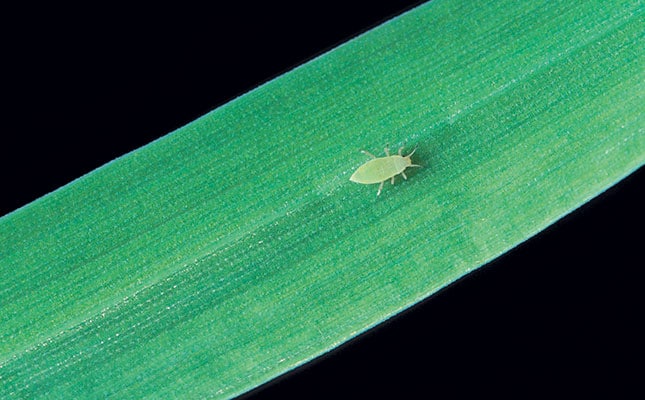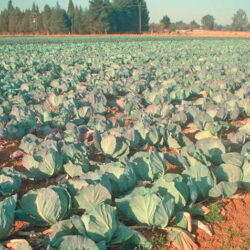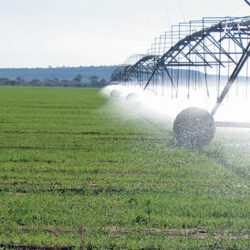The guidelines for weed control in wheat apply to barley.
It is essential to identify weeds correctly, as different chemicals are used to control broadleaf and grass weeds. The only herbicides that are suitable for the control of the latter in barley are Hoelon, Ravenger and Grasp.
Follow the recommendations on the label. If the dosage is too high, it can harm the barley plant; if it is too low, it will be ineffective.
Insect pests, and how to control them
Barley is a natural host plant for the Russian wheat aphid and several other aphids. If early infestation occurs, apply an insecticide with the herbicide. In the case of late infestation, apply an insecticide on its own.
Leaf miners, an increasing problem in all production areas, can be controlled with Unimectin 18EC. Be on the lookout for false armyworm. Although no insecticide is specifically registered for the control of these pests, insecticides that target bollworm appear to be effective against false armyworm.
Measures to prevent lodging
Although the current irrigation cultivars Cocktail and Puma are more resistant to lodging than older-generation cultivars, lodging can still occur, especially under overhead systems.
When the stem of a grain plant ‘lodges’, it bends over near to the ground, making it difficult to harvest. This greatly reduces yield. To help prevent the problem, do not over-irrigate the crop during the early stages of plant development.
If the barley is too lush during the early growth stages and you think that lodging may become a problem, stress the crop by applying less water for 10 to 14 weeks after planting. At this stage, water stress will have the least negative effect on yield.
A lower planting density (fewer than 140 plants/m²) can also help to decrease lodging, provided that seedbed preparation is optimal. A higher seeding density means taller plants with weak straw due to greater competition for air and light.
Controlling fungal disease
Fungal diseases in barley plants are not normally a problem in hot, dry areas where the crop is irrigated. Should any disease appear in the barley, ask a representative of SAB Maltings for advice as soon as possible.
On the other hand, fungal contamination of barley grain in these areas is common. Some fungi can produce substances that are toxic to humans and livestock.
It is therefore essential that the crop is harvested as soon as it’s ready in order to minimise the risk of ripe barley being exposed to rain.
Irrigating for even ripening and plumpness
Schedule the irrigation according to evaporation and crop needs at each growth stage. This information should be available from your SAB Maltings representative.
Irrigation should not be stopped too soon. Apply the final irrigation when the total plant is almost discoloured. This will ensure even ripening and produce grain with a high percentage of kernel plumpness and acceptable nitrogen content.
Source: Kotzé, GJ: ‘Guidelines for the production of malting barley under irrigation’, SAB Maltings, Kimberley.
For more information, phone the SA Barley Breeding Institute on 028 212 2943.
Visit sabbi.org.




